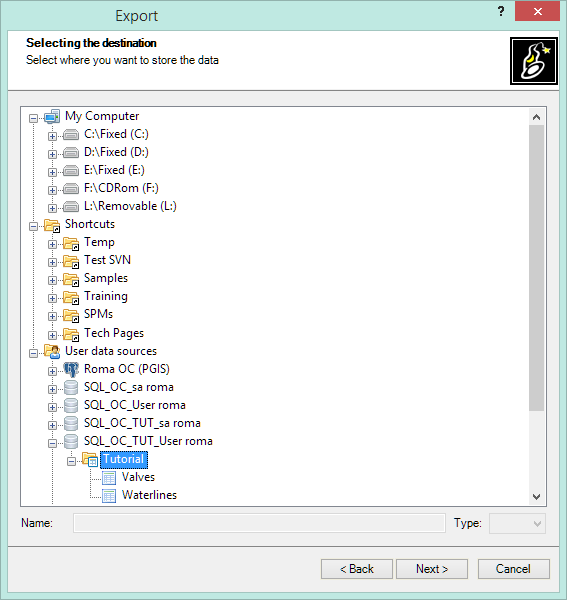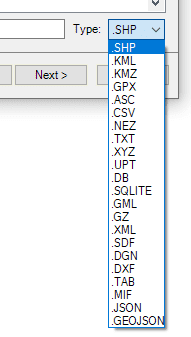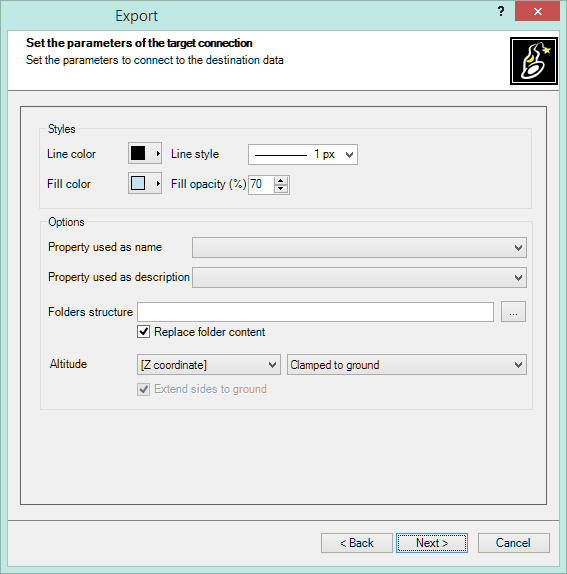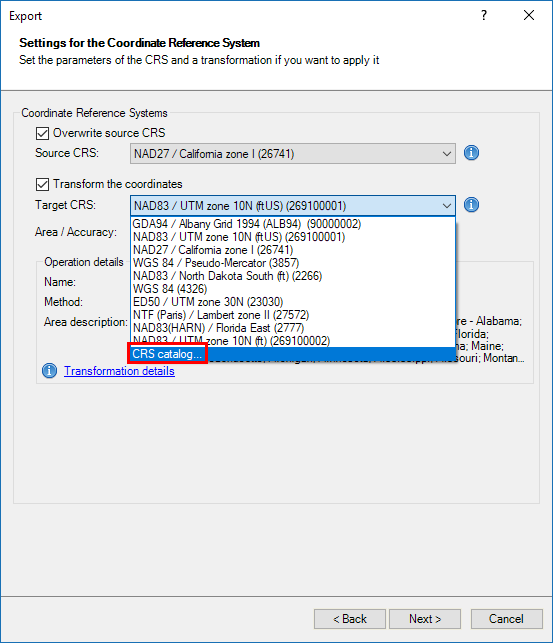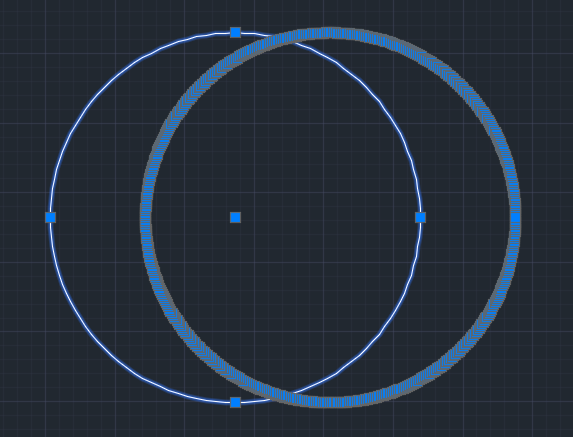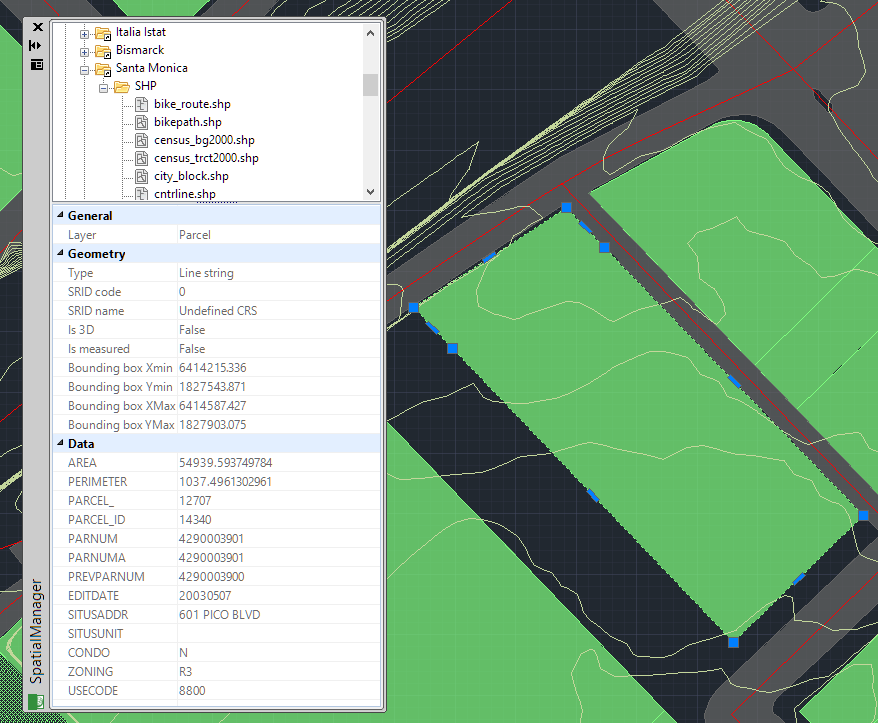Spatial Manager™ for AutoCAD - FAQs: Export ("Professional" edition only)
Introduction
- Objective of this section
- To learn how to define export processes and their parameters and manage coordinate transformations
- Topics in this section
- Targets: data sources
- Export parameters: AutoCAD objects selection, objects report, treat closed Polylines as Polygons
- Transforming the coordinates: source and target, favorite coordinate systems, searching in the coordinate systems table and transformation parameters
How can I Export AutoCAD objects as spatial features?
You can export AutoCAD objects as spatial features into files or databases by executing the 'SPMEXPORT' command of Spatial Manager™ for AutoCAD, which you will find in the "Spatial Manager" AutoCAD ribbon. This will launch the "Export" wizard of the application, which shares some of the steps with the Import wizard. The command not only exports the selected objects but saves their XDATA as data tables (see below)
'SPMEXPORT' command in the Spatial Manager™ for AutoCAD ribbon
While running the "Export" wizard, you can select the export parameters that match your needs:
- Export selection:
- Select all objects: all objects in the drawing (layers "On" and "Thaw") will be exported
- Only selected objects: only a selection of objects will be exported. You can select the objects before executing the Export function or by using the Selecting button in this window
- Select objects in a layer: only the objects included in an AutoCAD Layer will be exported. You can select this layer using the drop-down list in this window
- Other
- Treat closed polylines as polygons: when checked, all closed Polylines in the drawing will be exported to the target as Polygon features. Most of the time the closed polylines represent polygonal elements in the target data format and this conversion can be automatic
- Create unique key field using the object "Handle": when checked, the exported data Table will include a new Field whose value will be the "AutoCAD Handle" which is unique for every object in a drawing
- Objects report: the application shows here the total number of the objects which will be exported and any warnings prior to the export process, such as the total number of unsupported objects which will not be exported or others
How can I configure the spatial Target when exporting from AutoCAD?
When you export using Spatial Manager™ for AutoCAD you must to select the exporting destination. If needed, you also must to select the data provider and its parameters
First, you select the destination for the exported data: a file or a table inside a file or a database (or inside a schema of a file or a database)
Next, you select a file type (the data provider). This step is not required if you have selected a destination which defines its own data provider (such as a SQLite table or a PostGIS table)
Then, you configure the export data provider connection parameters, if needed (Image: sample of the KML/KMZ files data provider)
How can I define a Transformation of coordinates when exporting?
When you are Exporting AutoCAD objects as spatial Features using Spatial Manager™ for AutoCAD, you will see that you can choose a Transformation of coordinates from the source to the target, in the "Export" wizard. This means that the application will calculate a geometric transformation between the source and the target data, which will depend on the chosen CRS for the source (drawing) and for the target (outgoing Features) data. You can choose the appropriate CRSs by clicking on "CRS catalog...", in the CRS dropdown list for the source or for the target data. In the CRS table you can:
- Filter the CRSs by type (Geocentric, Projected, etc.)
- Choose a CRS by clicking on its row in the table
- Search CRSs by typing the search criteria in the "Search" box. You can type as many words as you like here,separated by blanks. The application will find all the rows which include all these words in a column of the table
After choosing a pair of valid CRS for a Transformation, you can choose the geographic Area to apply it to (the application will choose by default the most common Area for this Transformation)
If the application "knows", "guesses" or "can assume" the CRS of the source and/or the target data, they will be chosen by default. You will be able to modify this choice, except in cases where only one CRS is valid; for example, for a KML or a KMZ file the only valid choice is the CRS WGS84 (SRID 4326), because these types of file are always defined using this CRS
You can assign a CRS to the drawing, or modify it, using the command 'SPMSETCRS'. By executing this command you will access the CRS catalog of the application, described in the previous lines
- When exporting:
- Those objects without assigned CRS will adopt the CRS of the drawing in the Transformation of coordinates
- If all the objects to export have the same assigned CRS and the drawing has not an assigned CRS, the Transformation of coordinates will take the CRS of the objects as the source CRS by default
Note: as you will see, the CRS dropdown lists will include more and more CRSs which have been previously chosen in other Transformation operations, so that you can choose your "favorite" CRSs directly from the dropdown list without having to access the CRS Table all the time
CRS catalog of the application
'SPMSETCRS' command in the "Spatial Manager™ for AutoCAD ribbon
Is there any limitation or modification in the original objects when exporting?
Yes, there are some limitations and there may also be automatic changes in the objects when they are exported using Spatial Manager™ for AutoCAD
- Limitations:
- Filtering of incompatible objects: there are a few object types not supported by the export processes (such as Texts, MTexts or complex 3D objects), which are automatically filtered. The filter result is displayed before exporting on the "Objects report" of the first exporting wizard window
- Modifications
- Some objects, such as Blocks or External References, are exported as Point Features (Insertion Points). In the case of the Blocks or XRef, you must Explode them before exporting if you want to export their internal objects. The "Objects report" in the first exporting wizard window also warns the user about the number of Blocks and XRef Insertions if any have been selected to export
- Automatic complex geometric operations: the application will review and edit the selected objects in order to export geometries accommodated in the target format
Sample: segmentation of an AutoCAD Circle when exported to a Polygons Shapefile (SHP)
How are the XDATA exported?
If the selected objects to be exported have attached data (XDATA / EEDs), the XDATA will also be exported as data tables linked to the outgoing Features, if the Target supports these data tables. The XDATA can be attached when the objects are imported, by hand using the Data Structure Management tools or can be there by a combination of both cases
Related links
- See "Providers" also
- Now EXPORT from CAD to Google Earth, Shapefiles, etc.
- Export Blocks and External References to Google Earth
